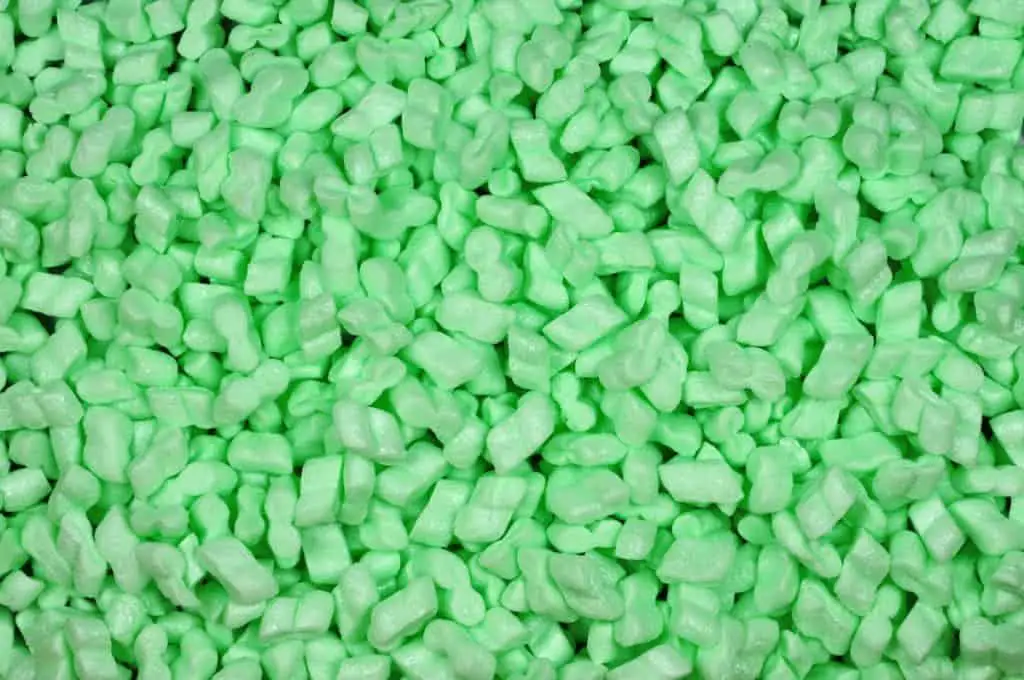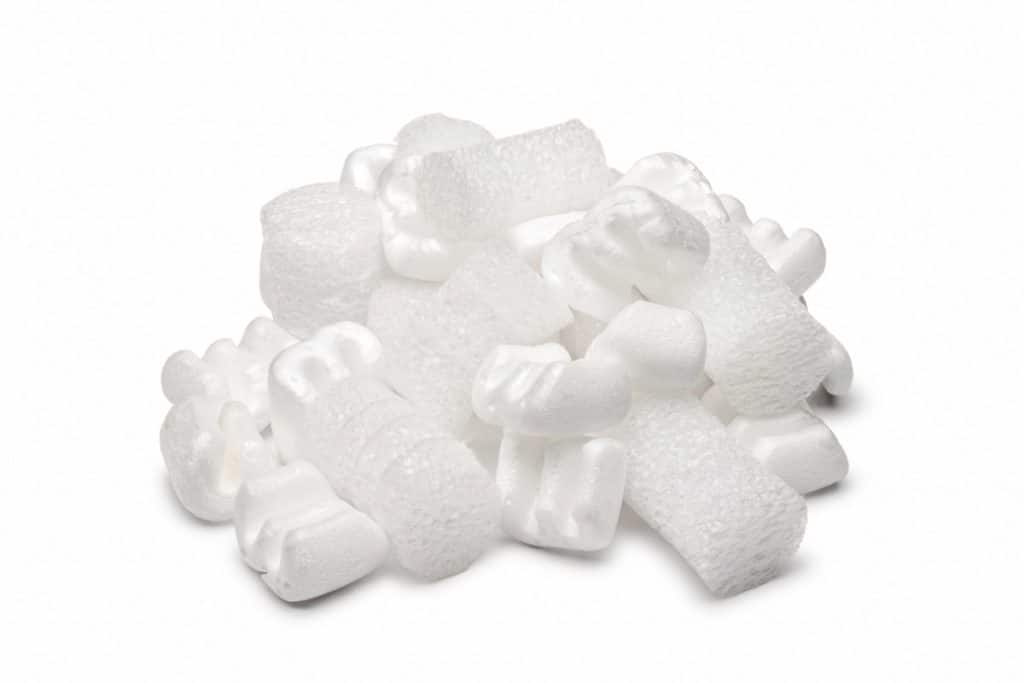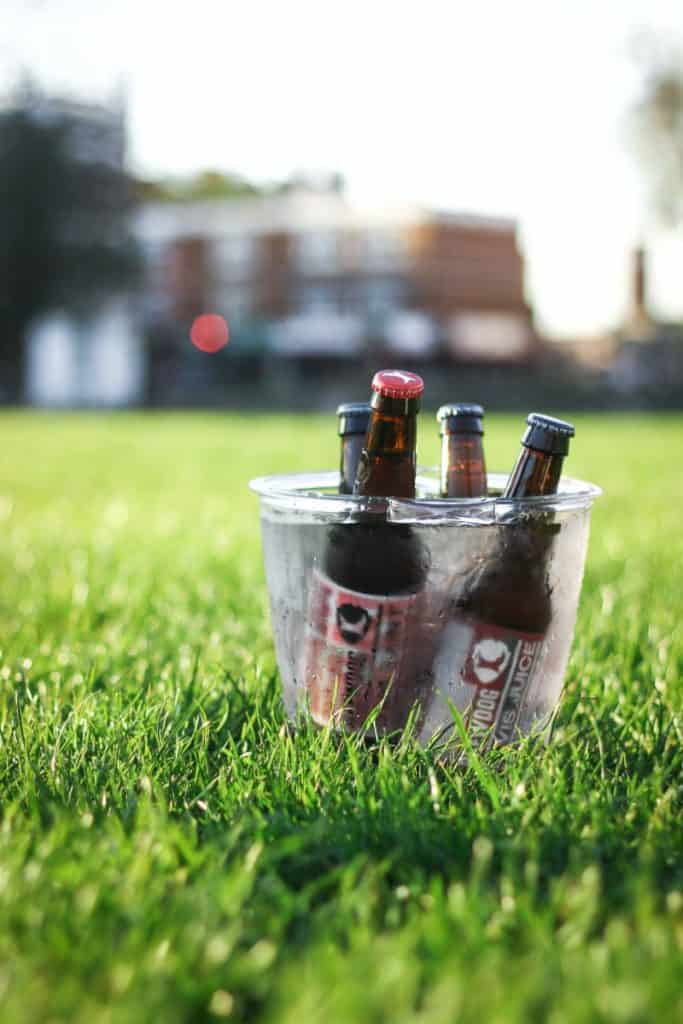Packing peanuts insulate similarly as layering clothes. When it’s cold outside, one of the best things you can do to keep yourself warm is to cover yourself with several clothing layers. Each layer will help trap in heat and bring down the amount of heat that gets lost. The thicker the insulation, the warmer you’ll feel. This same principle applies to packing peanuts when we are talking about how they can insulate and protect other objects.
Are packing peanuts good insulators? Yes, packing peanuts are excellent insulators because they are made out of Styrofoam. Styrofoam is designed from air bubbles that are trapped to prevent heat energy from escaping. By preventing heat loss, packing peanuts make lovely insulators.
Since there isn’t much information available on the Internet today covering whether packing peanuts are good insulators, we created this article to help you out. Below we’ll discuss what Styrofoam is, how it insulates, and several good uses for packing peanuts that include insulation, entertainment, and protection.
Packing Peanut Materials
Packing peanuts are made from Styrofoam, which is one of the reasons why they are such excellent insulators. Styrofoam is a term that’s trademarked and used to describe polystyrene foam, which is a form of plastic that is petroleum-based. The Styrofoam trademark belongs to the Dow Chemical Company.
Styrofoam has many features that make it beneficial and useful for a wide variety of applications. Styrofoam’s lightweight makes it excellent in shipping applications, and that lead to the creation of packing peanuts to protect products and insulate them well during shipping. Styrofoam also acts as an effective shock absorber, which also explains why packing peanuts are so handy when it comes to protecting items.

Styrofoam packing peanuts are one of the most common plastics that are used when it comes to packing and insulating materials, whether for storage or shipping. Styrofoam packing peanuts are also thermoplastic. So, they can easily change from a liquid to a solid at particular temperatures. Because Styrofoam packing peanuts can be altered this way, they can be molded to create crafts and other containers.
The Flow of Heat Energy
Heat energy gets lost as it goes from a hot object into a colder one in three different ways. Those ways include the following:
- Conduction
- Convection
- Radiation
#1 Conduction
Conduction, which means that the heat transfer happens when tiny particles run into another body. For example, if you’ve ever placed a spoon into your hot coffee to stir in some sugar and cream, then you know that as the spoon sits, it will conduct the heat. If you pull the spoon out of your hot coffee, it will be much warmer than it was before you placed it into your coffee.
#2 Convection
With convection, heat energy is transferred when most of the molecules in a particular fluid, like a gas or a liquid, moves in bulk. The fluid then starts to expand, and that makes a convection current as the temperature continues to increase. That also explains why hot air rises and cool air goes downwards by comparison.
For instance, if you’ve ever lived inside of a large, two-story home, then you know that the upstairs area of your home always feels warmer, and the downstairs feels much colder. That’s an example of convection in action.
#3 Radiation
Radiation means the emission of energy in the form of electromagnetic waves or floating subatomic particles. Radiation will heat anything solid that the radiation travels through To keep something hot, you need to prevent the transfer of heat from one item to the next.
Styrofoam packing peanuts are great insulators not because they are warm themselves, but because they prevent the transfer of heat from one object to another. And that explains precisely how insulation works when it comes to Styrofoam packing peanuts.
Insulation with Styrofoam Packing Peanuts
Styrofoam is comprised of tons of air, meaning it doesn’t conduct heat well. On the other hand, that does mean that Styrofoam packing peanuts are wonderful convectors. Insulation with Styrofoam packing peanuts works well because the peanuts trap air in tiny pockets. That means the flow of heat energy is essentially blocked, making it difficult for the heat to escape.
By using Styrofoam packing peanuts to trap heat, the peanuts reduce conduction and convection, which means that packing peanuts can insulate well. By comparison, other conductors, like metals, aren’t great insulators. Since energy can flow through metal, metal cannot trap heat, in the same way, packing peanuts can.
Styrofoam is even used in wall cavities so that the interior of buildings and houses stay warm. Since Styrofoam can trap in air and prevent the loss of heat, heat remains inside the home longer when a house is insulated with Styrofoam.
The Many Uses of Styrofoam Packing Peanuts
Polystyrene packing peanuts are excellent as insulators and protectors, as we’ve already covered. They can protect fragile items and even insulate homes. However, did you know you can use them in a variety of ways? You may want to keep a hold of your Styrofoam packing peanuts the next time you open up a package. Below we’ve listed a few things you can do with your packing peanuts.
#1 Shipping Packages

Of course, this is the obvious way to reuse your packing peanuts after you’ve opened up a package. Using packing peanuts to protect and insulate products that are being shipped is the most common way these items are used. So, don’t forget that you can recycle and reuse them when you are shipping something fragile.
#2 Keep Drinks Cool

You can also use packing peanuts if you want to make a simple and easy-to-use do-it-yourself cooler that won’t get messy and melt everywhere, like ice. Here’s how you can do that:
- First, chill your drinks
- Next, place your polystyrene packing peanuts in a tub.
- Last, add your cold drinks to the tub of polystyrene peanuts.
#3 Fill Your Pillows or Beanbag Chairs

If you have an old beanbag chair that needs some new life added into it, consider grabbing your extra packing peanuts. You can stuff your old beanbag chair with those packing peanuts to add some more cushioning to the chair.
That same strategy also works well for pillows. If you have pillows that are getting droopy or old, open them up and add some packing peanuts inside of them. You’ll wind up with heftier, more comfortable pillows for your friend and family to use. Who doesn’t love a little extra comfort?
#4 Better Plant Drainage

You can utilize your extra packing peanuts and place them at the bottom of the planter. By doing that, you’ll help encourage additional drainage for those potted plants. If you have several large planters, then this solution should work quite well for you. Using lightweight packing peanuts instead of heavier soil in the bottom also decreases your planter’s weight and makes it easier to move.
#5 Keep Your Walls Protected

If you want to protect your walls from scrapes that happen from picture frames and framed mirrors, then using your packing peanuts can help you out. Here’s what you’ll need to do:
- Cut a packing peanut in half.
- Now glue the edge that is flat to the back of your framed item that you plan to hang.
- Let the glue dry.
- Once the glue is dry, you can hang your picture.
By adding some cushioning to your framed artwork and mirrors, your walls won’t encounter so many scuffs.
#6 Cushion and Insulate Fruit

If you often purchase fruits and vegetables that are delicate, there’s a way you can insulate them and protect them when you place them in the fridge (or outside of it). Of course, you’ll be using packing peanuts.
- First, grab a bowl that’s large enough to fit all of your fruit.
- Now grab your packing peanuts and place them on the bottom of the bowl
- Last, fill the bowl with fruit. Make sure to spread the fruit out so that it won’t bruise.
- If you refrigerate your fruit, the packing peanuts will help insulate your fruit, preserving them well.
